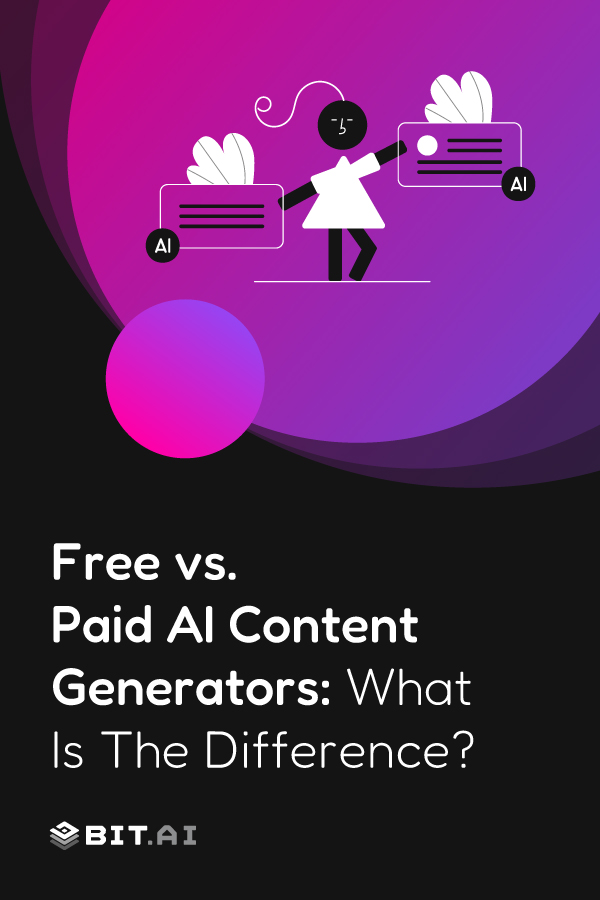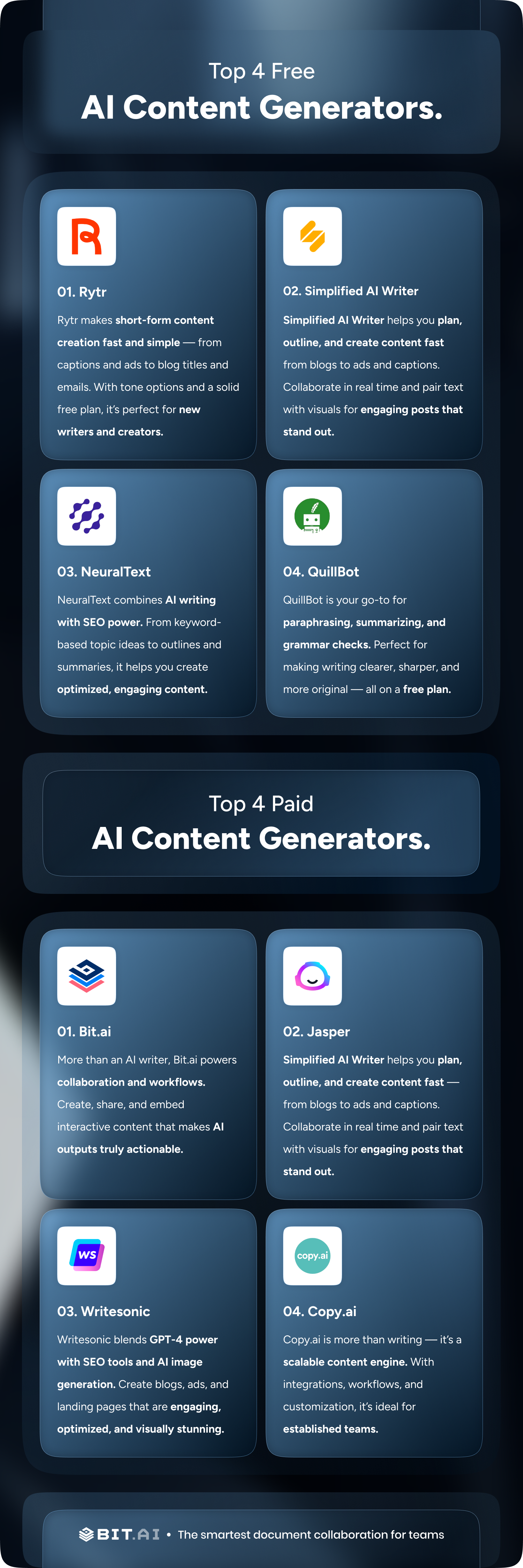If you’ve ever tried creating content with AI, you’ve probably wondered: “Should I stick to free tools or pay for a premium option?” It’s a fair question—especially when free tools look tempting and promise “AI-generated content” at no cost.
But let’s get real for a minute: free AI tools can help with straightforward tasks, short social posts, brainstorming ideas, etc., but they can have constraints that interfere with you when the nature of your work changes. Paid tools, on the other hand, give you access to more powerful models, deeper customizations, and smooth features and integrations that allow your whole team to collaborate on content.
So if you plan on doing anything with SEO-driven blogs, ensuring your brand voice is maintained, or making any sort of multi-stage content workflows, then a paid tool can be worth it.
In this guide, we’ll break down the fundamental differences between free and paid AI content generators, when to use each, and how to choose the best fit for your goals. By the end, you’ll know exactly what to invest in—and how to make the most of your AI-powered content strategy.
Now, let’s start by understanding what these AI content generators actually are.
What is an AI Content Generator?
An AI content generator is a software program that utilizes artificial intelligence to create text-based content automatically. These programs are literally able to produce anything for you, from creating reports, manuals, client content, social media updates, blog posts, and much more. The best part is that more often than not, this type of work takes seconds to accomplish!
How Does It Work?
The majority of AI-based content creators are powered by large language models (like OpenAI’s GPT) that were trained on billions of words and datasets. When you provide a prompt, the model generates content that mimics patterns of natural language.
Types of Content AI Can Create:
- Blog articles and outlines
- Email marketing copy
- Product descriptions
- Social media copy
- Press releases and teasers
Reports & white
Where It Fits in the Content Workflow
AI content generation doesn’t replace human writers, but it frees them up from mundane tasks. These tools are a breath of fresh air for writing, brainstorming, or amplifying mundane writing tasks. When combined with a workspace like Bit.ai, users can seamlessly document, review, and collaborate on the generated content using intelligent templates and real-time commenting. Now we will learn about the significant differences between paid and free content generators.
What’s the Difference Between Free and Paid AI Content Generators?
You may think free and paid AI content generators are the same, as both produce automated content—but it’s all about quality, depth, and flexibility. Oftentimes, free content generators limit your usage, including character limits and less customization, often making you work with older models. Free content generators may not properly polish, set a tone, and format the content properly, limiting the usability of the content.
They can work well for smaller tasks, like summaries, social media captions, or brainstorming, especially while you are learning about AI writing.
Paid AI content generators unlock the power of AI. You will have access to advanced models, brand voice, and features for long-form content, such as blogs, whitepapers, and SEO-style articles. They maintain context better, produce more coherent text, and even work with awesome platforms like Bit.ai—making content collaboration seamless.
If you’re building a content strategy or need consistent, professional output, paid tools offer far more value.
🚀 Want smarter, faster, and brand-ready content? Try Bit.ai’s Genius AI Writer and see how effortless AI writing can be.
How to Choose the Ideal AI Content Generation Tool
Picking between a free and a paid AI content creator is all about one thing: your specific content requirements. There are many teams that won’t require all the sophisticated features or long-form output offered by these few options, and there are some processes that can be managed by free software as well. But knowing when to opt for monetizing tools can make a massive structural improvement to quality, consistency, and speed.
Here is what you’ll need to think about in regard to what you’re evaluating as a content creation tool:
☑️ Type of Content – Are you writing blogs, creating reports, or resource guides?
Start by clarifying what kind of content you need most. If you’re planning long-form blogs or in-depth reports, you’ll need a tool that supports detailed outputs and formatting. For quick social posts or emails, a simpler tool can do the job.
☑️ Volume – How often do you need to produce content?
If you only create content occasionally, a free AI tool might be enough. But if you need daily or high-volume production for marketing campaigns or multiple channels, paid tools with unlimited usage will save you time and frustration.
☑️ Customization Needs – Do you need to replicate a particular tone or voice?
Businesses often require consistency in tone and brand voice. If maintaining your brand personality is critical, choose a tool that allows tone adjustments, style settings, and brand voice training.
☑️ Team Collaboration – Will several people be reading or editing outputs?
If your content involves multiple team members—writers, editors, marketers—look for tools that support collaboration and sharing. Platforms like Bit.ai make this easy by organizing and collaborating on content in shared workspaces.
☑️ Budget – Is there room for a monthly fee, or are you seeking a free one?
Finally, consider your budget. Free tools are excellent for testing and little projects, but paid tools will include advanced tools, integrations, and scalability—ideal for committed content marketing.
Now, let’s take a look at a few content creation tools that you should know……..
💡 Pro Tip: Don’t just pick an AI writer, choose one that fits your workflow. With Bit.ai’s Genius AI Writer, you can generate, edit, and collaborate on content seamlessly in one place.
AI Content Creation Tools You Should Know About
There are tens of AI content tools to choose from, but they are not all created equally. Some are geared toward short-form content and speed, others toward high-end, long-form production with extensive customization. Whether you’re browsing tools or developing a long-term strategy, it’s worthwhile to know what’s available—and what each does best.
Top Free AI Content Generators
If you are new to AI-generated writing or wish to minimize your costs, free AI content generators can be a great option for a starter. While they do not have the high degree of customization of premium tools, they can be great for quick content, a list of ideas, and posts of short length. Here are a few key options you can try:
 #1. Rytr
#1. Rytr
If you are in need to write short-form content fast and efficiently, Rytr is a great choice. Using its intuitive interface, you can generate great-looking social media captions, ad copies, blog post titles, or even subject lines for emails in a matter of minutes. You are going to love the optionality of picking between different tones for creative writing. In addition, it offers a great free plan, making it well-suited for new writers who want quality for free.
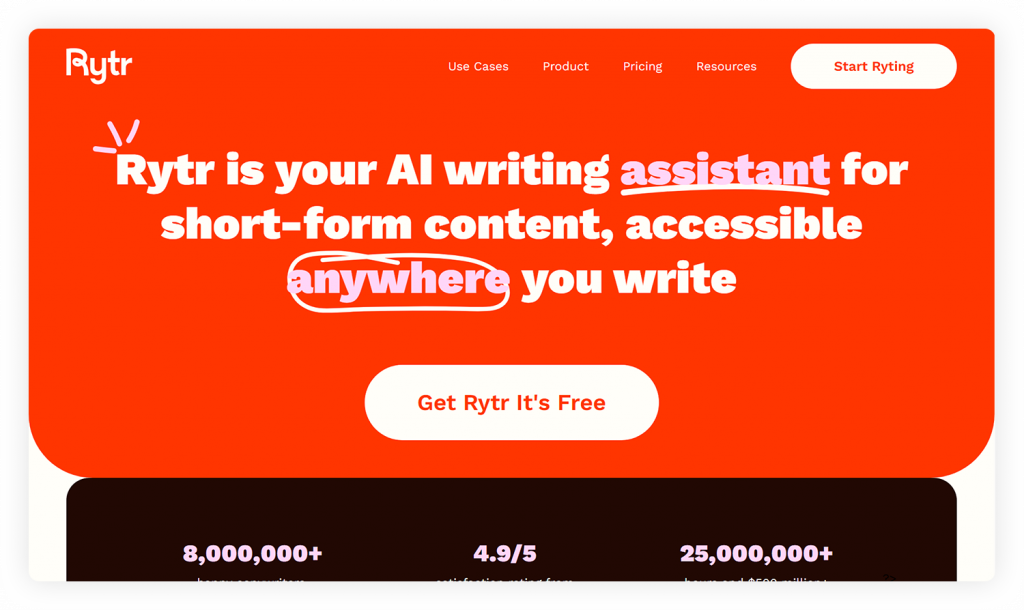
Features:
- Wonderful for short-form content like social media captions or advertisements.
- Multiple tone preferences for creative writing.
- And the free plan is very generous with the word limit for beginners.
Bonus Read 👉 6 Best AI Writing Tools For 2025 (Free & Paid)
 #2. Simplified AI Writer
#2. Simplified AI Writer
Simplified AI Writer is perfect for planning and structuring your content. You can generate outlines for blogs, ad copy, and captions in just a few clicks. The best part? You can collaborate with your team in real time—even on the free plan. Plus, it integrates with design tools, so you can pair text with visuals for more engaging posts.
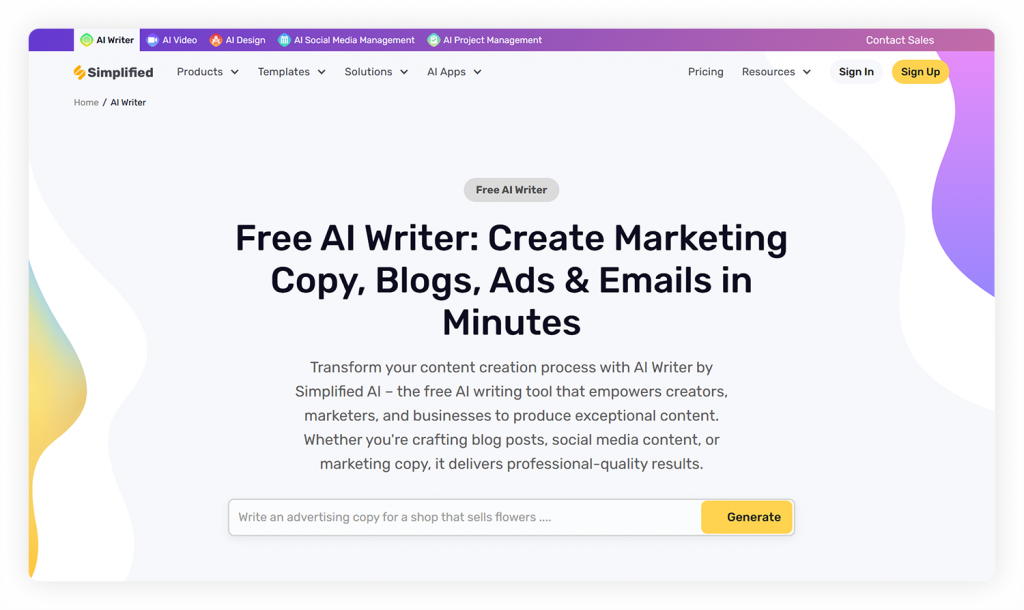
Features:
- Generates outlines for blog and marketing copy;
- Collaborate with team members in real time, even on the free plan.
- Integrate with design tools to create visual content;
 #3. NeuralText (Freemium)
#3. NeuralText (Freemium)
NeuralText is the perfect tool if you’re looking for some AI writing with some SEO functionality. It assists you with content topic ideas based on keywords, outlines, and even summarizes articles for research. If you’re trying to rank your content while remaining interesting (which can be challenging), NeuralText provides a great balance of creativity and optimization.
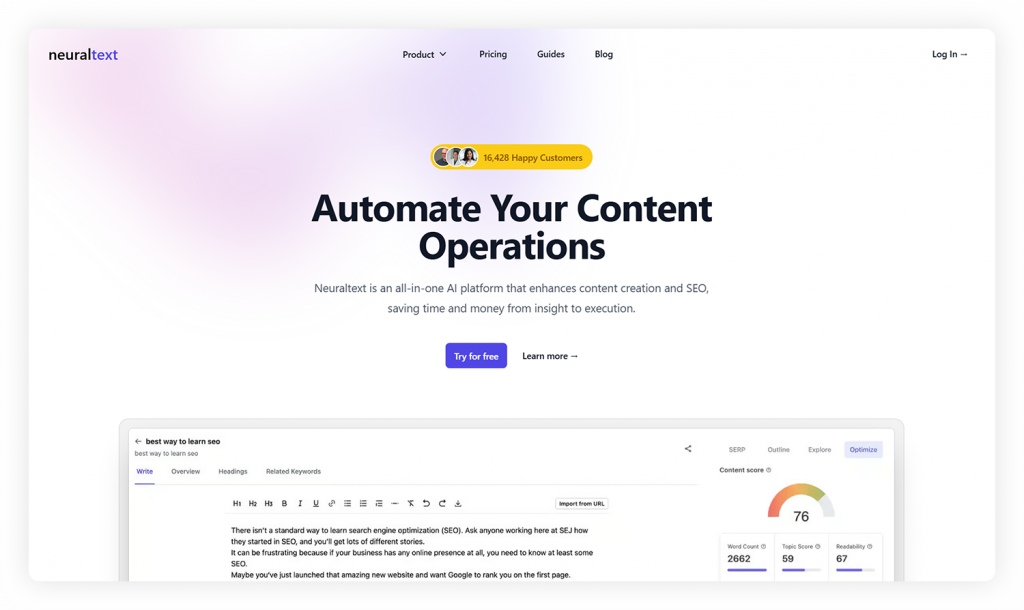
Features:
- Provides SEO compliant content ideas and outlines
- Summarizes articles for research
- Free tier offers limited queries per month
🧠 Fun Fact: As of 2025, 34% of U.S. adults say they have used ChatGPT—about double the share in 2023.
 #4. QuillBot (Free Paraphraser & Summarizer)
#4. QuillBot (Free Paraphraser & Summarizer)
QuillBot is not a complete long-form content generator, but it is a super cool free resource that can help you rephrase and enhance your writing. If you have something you have already written and want to make it sound better, clearer, or original, QuillBot can help you with that in seconds. They provide a free plan that allows users to paraphrase, summarize articles, and even check for grammatical errors, an incredible value for any writer who is on a budget.
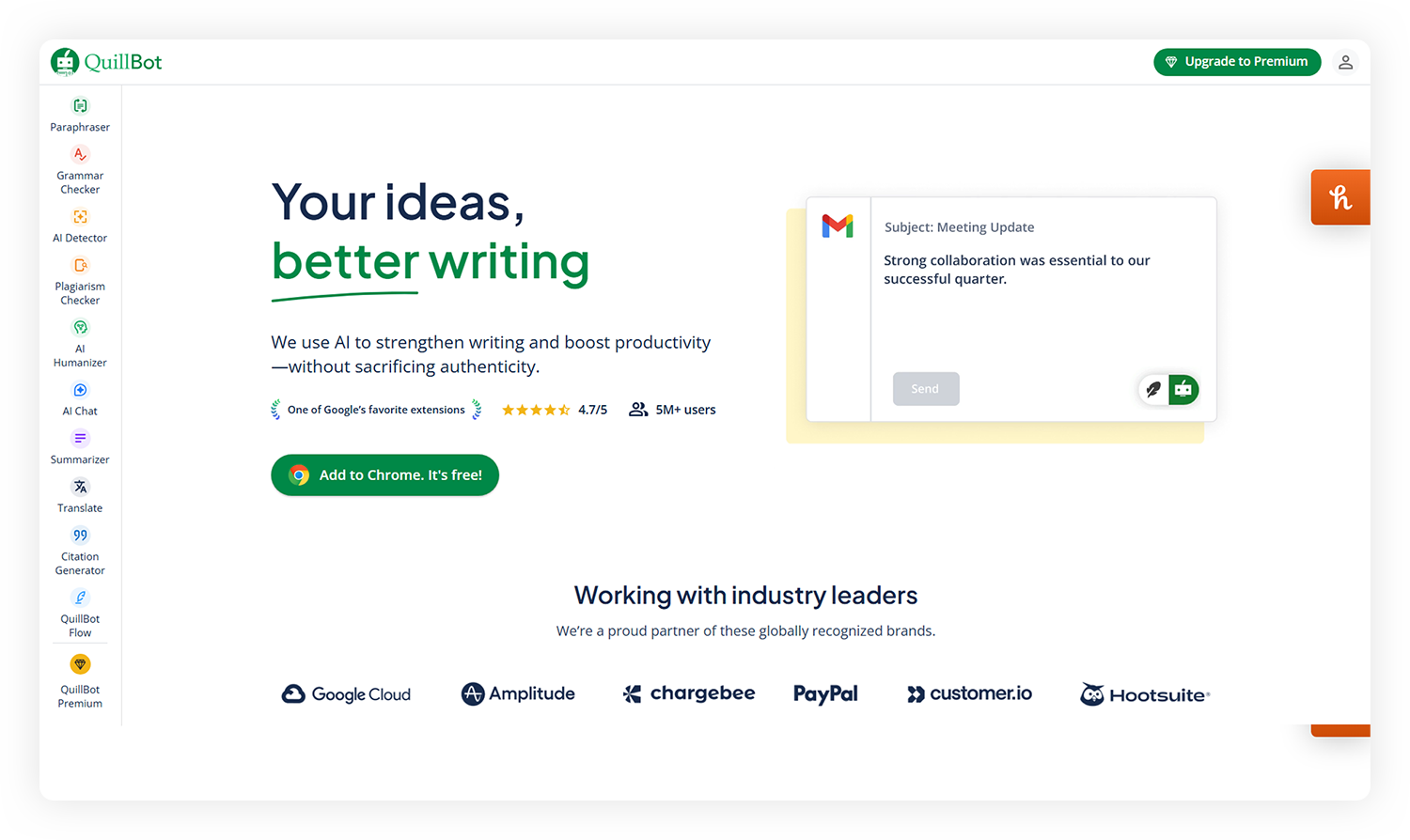
Feature:
- Free paraphraser (many modes).
- Summarizer, for short-term deployment of long articles or reports.
- Basic grammar checker (in free plan).
Free tools may be enough for low content needs or brainstorming, but usually have word limits or lower quality controls.
Leading Paid AI Tools
If you’re serious about content marketing or managing high-volume content production, paid AI tools are a game-changer. These services are built on advanced aesthetics, including tone regulations, SEO, and collaborative support, which are likely nonexistent within free plans.
Here are some of the most useful paid subscriptions that I have recommended:
 #1. Bit.ai
#1. Bit.ai
Bit.ai is more than a simple AI content generator; it’s the smartest platform for creating, organizing, and managing your content workflows. Unlike tools that only help you write, Bit.ai helps your entire team collaborate, share prompts, and make AI-generated content actionable. With its AI Genius Writer and AI Doc Builder, you can draft blogs, reports, and professional documents in minutes, while also embedding videos, links, and files into smart, interactive docs. For businesses that want both content creation and seamless collaboration, Bit.ai is unmatched.
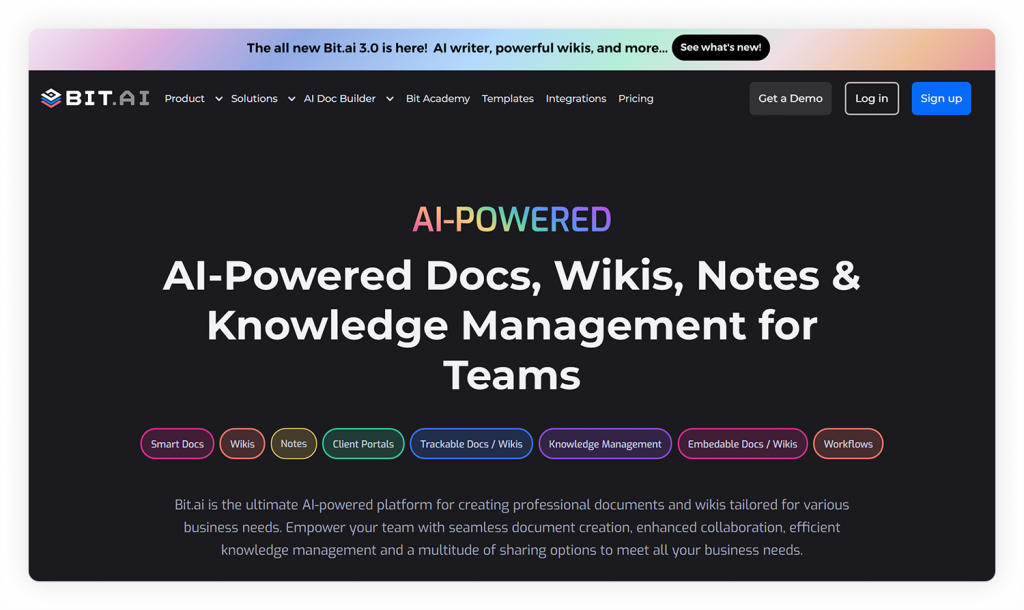
Features:
- Team Collaborative Workspaces – Work with your team in real-time, eliminating version chaos.
- Smart Docs & Wikis – Add AI content, videos, links, and files into one interactive document.
- Collaborative Tools – Easily assign roles, set privileges, and monitor your version history.
- Integrations Galore – Connect with Google Drive, OneDrive, and 100+ applications.
- AI Genius Writer – Write blogs, reports, and emails instantly.
- AI Doc Builder – Create entire documents in minutes by answering a few questions.
- Multiple Sharing Methods – Share your docs and wikis with a shareable link, trackable link, lead capture form, password protection, and embed them on any website.
Pricing:
- Paid Plan: Starting at $12/month
- Business Plan: Starting at $20/month per user
- Enterprise: Custom pricing available
 #2. Jasper
#2. Jasper
Jasper is the most prominent writing assistant AI for companies that create longer content, such as blogs, whitepapers, or marketing emails. Jasper is primarily aimed at teams that value consistency and speed of brand, featuring tone management, workflow control, and pre-defined templates tailored to marketing campaigns. With Jasper, you don’t just generate words; you are producing strategic, on-brand content quickly and consistently.
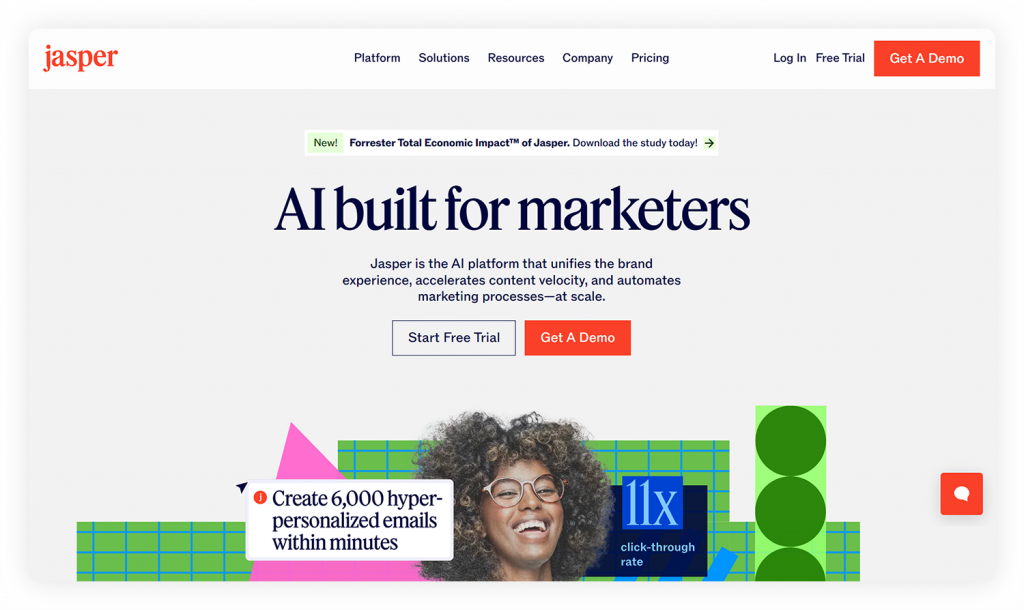
Features:
- Advanced long-form writing capabilities for blogs and articles
- Tone and style manageability for brand consistency
- Tools for collaborative writing/creating content as a team
- Pre-built templates for marketing, ads, and emails
Pricing:
- Paid Plan: From 69 dollars/month
- Premium Plan: Custom pricing/team and enterprise pricing
Quick Add-On 📌 Free Content Calendar Template to Plan, Coordinate & Grow Your Content Game
 #3. Writesonic
#3. Writesonic
Writesonic combines power and creativity to help you produce optimized content fast. You get GPT-4 access, a built-in SEO mode, and even AI image generation for more engaging storytelling. It’s perfect if you’re looking for blogs, ad copy, and landing pages that are not only compelling but also search-engine friendly and visually spectacular.
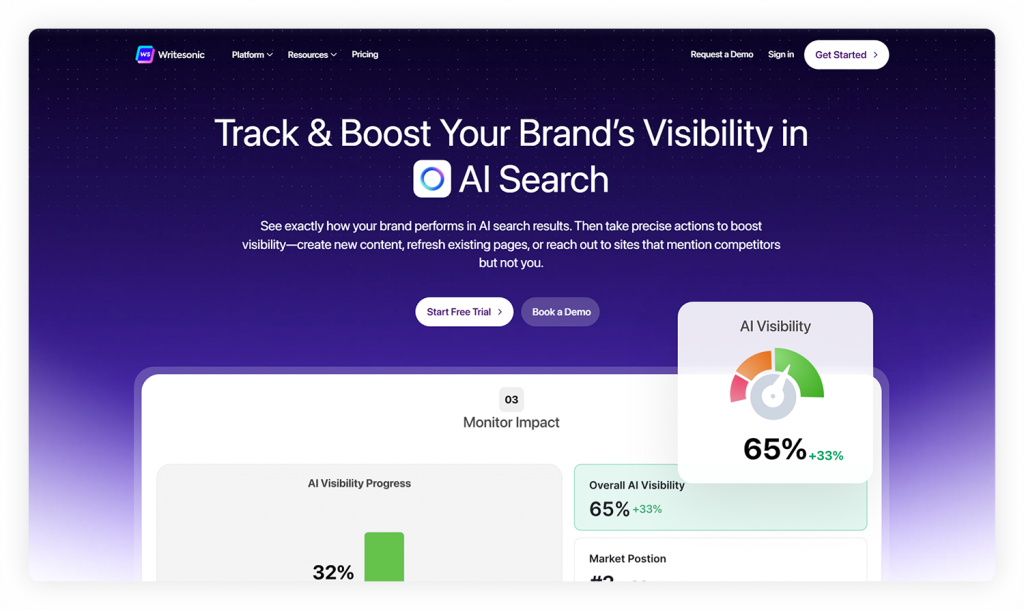
Features:
- Accurate and in-depth generation from GPT-4
- Built-in SEO mode
- Generative AI images
- Blog writing, ad copy, and landing pages
Pricing:
- Paid Plan: From $49/month
- Premium Plan: From $500/month for enterprise teams
🚀 Don’t just generate content, manage, track, and collaborate on it with Bit.ai! try it now.
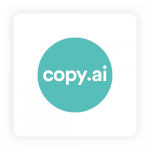 #4. Copy.ai
#4. Copy.ai
Copy.ai takes your content workflow to the next level. The Pro version allows users to have unlimited words, advanced workflows, and brand voice customization. This tool is perfect if you want to scale your content production without losing quality. It also integrates with popular marketing tools and CRMs, making it a strong fit for established businesses and growing teams.
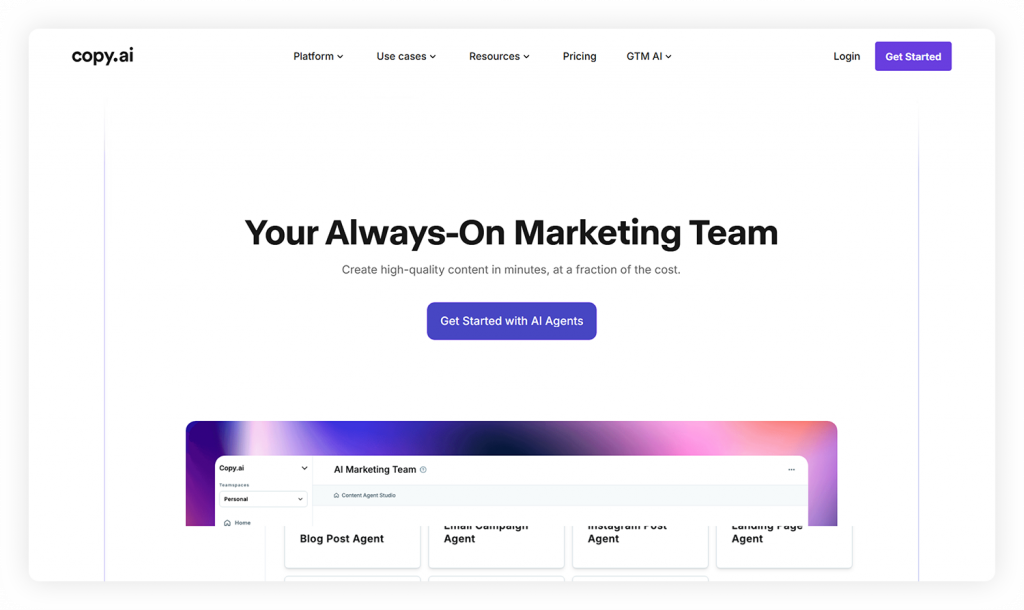
Features:
- Unlimited words with full template access
- Advanced workflows for automated content generation
- Brand voice functionality for consistent messaging
- Integrations with marketing tools and CRMs
Pricing:
- Paid Plan: $49/month
- Premium Plan: Enterprise-level pricing available on request
Now that we know of various tools and their features, let’s wrap up with a few words.
Wrapping It Up
AI content creation tools are no longer nice-to-have add-ons but essential tools for content operations nowadays. Free items are great for experimentation or for performing low levels of writing. Yet, for more advanced uses like long-form blogs, brand consistency, or SEO efforts, it does pay to invest in a paid AI tool.
That is, however, the real strength when these tools are combined with Bit.ai. Whether copying outputs from a free AI tool or editing professional drafts from a paid one, Bit.ai actually gives the framework to work together, get organized, and publish with clarity. From being smart templates to version tracking, inline comments, and smart search, your AI-created content doesn’t stand alone but is part of a greater system that is optimized.
As you weigh your choices, start small if needed, but keep scalability in mind. Try out a few free AI tools. Discover what they can (and cannot) accomplish.
FAQs
- What is the difference between free AI and paid AI?
The primary variation is capability. Free AI tools often have limited features, few customization options, and brief outputs. Paid AI tools provide complete access to high-end models (such as GPT-4), allow for tone and structure control, enable the creation of long-form content, and often support third-party platforms like Bit.ai.
- Which free AI is best to use for content creation?
There are many reputable free tools available, including:
- Rytr – Great for marketing copy quickly
- ai (free basic version) – A nice tool for short text and for creative ideas
- Simplified AI – Simple and easy to use for those getting started
These tools are good for light content creation or personal use.
- What are the pros and cons of using a free content creator?
Free content creators have the following Pros:
- No cost
- Great for small tasks or a testing version of AI writing
- Simple to use
and Cons:
- Word-use limits or caps
- Reduced quality for a large quantity
- Fewer options for tone, format, or SEO optimization
- Can I create long-form content with the use of free AI tools?
Technically, yes; however, there are a few free AI tools that would work for a complete-length blog post or long document. You will likely be cutting and pasting multiple outputs or heavily editing. If you require standard, long-form output, paid tools will likely work better.
- Where are AI content generation tools most useful?
AI content tools work well for all industries, but especially in:
- Marketing and PR
- E-commerce
- Education and training
- Startups and tech companies
- Agencies and freelancers
AI generation can be integrated into Bit.ai’s smart documentation system by teams in these industries to unify, organize, and collaborate on content efficiently
Keep Reading & Learning 📚
